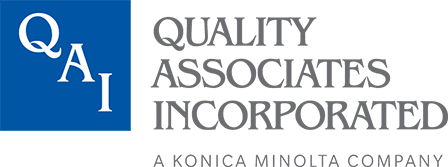In the ever-evolving digital landscape, the National Archives and Records Administration (NARA) and the Federal Government have taken a significant step forward by implementing permanent record digitization guidelines. These guidelines impact federal agencies and have far-reaching implications for state, local, education, and commercial businesses. As organizations strive to keep pace with technological advancements, the need for efficient and sustainable record management practices has become paramount.
Why Records Modernization is Critical
Green Initiatives and Sustainability
One of the most compelling reasons businesses embrace digital records management is its contribution to environmental sustainability. Organizations can significantly reduce their carbon footprint by transitioning from paper-based processes to electronic records. Reducing paper consumption, transportation requirements, and physical storage needs substantially decreases energy consumption and waste generation. This aligns with the growing emphasis on corporate social responsibility and the global drive towards a greener future.
Modernization and the Paperless Office
The digitization guidelines pave the way for organizations to fully embrace the concept of a paperless office. By digitizing records, businesses can streamline processes, enhance collaboration, and improve accessibility. Employees can access and share information seamlessly, eliminating the need for physical document transfers and reducing the risk of lost or misplaced records. This modernization effort increases operational efficiency and positions organizations as forward-thinking and adaptable to evolving technological landscapes.
Process Improvement and Workflow Optimization
Digital records open opportunities for process improvement and workflow optimization. Organizations can automate manual tasks, eliminate redundancies, and expedite decision-making processes by leveraging advanced technologies. Digitized records can be easily searched, retrieved, and shared, minimizing time spent on administrative tasks and allowing employees to focus on more strategic and value-added activities.
Hybrid Workforce Enablement
Supporting a hybrid workforce is crucial in today’s rapidly changing work environment. Digital records facilitate remote access and collaboration, enabling employees to work seamlessly from any location. This flexibility enhances productivity, promotes work-life balance, and attracts top talent seeking flexible work arrangements.
Space Allocation and Cost Savings
The transition to digital records presents a significant opportunity for organizations to optimize their physical space allocation and reduce storage costs. By eliminating the need for extensive physical storage facilities, businesses can reallocate resources towards more productive initiatives or explore downsizing their office spaces, leading to substantial cost savings.
Metadata Support: Unlocking Automation, AI, and Business Intelligence
One of the most significant advantages of digital records is the ability to enrich them with metadata. This metadata can fuel advanced capabilities such as automation, artificial intelligence (AI), business intelligence, and interactive dashboards. By harnessing the power of metadata, organizations can gain valuable insights, make data-driven decisions, and leverage predictive analytics to drive growth and innovation.
Getting Started: A Strategic Approach
To embark on a successful digital transformation journey, organizations should adopt a strategic and systematic approach to records modernization:
Assessment and Requirements: Conduct a comprehensive evaluation of the organization’s current record management practices, identify pain points, and define clear objectives and requirements for the digitization project.
Pilot Project: Implement a pilot project to test the digitization process, validate the chosen technology, and identify potential challenges before scaling up the initiative.
Budgetary Planning: Obtain accurate cost estimates for hardware, software, and services, including ongoing maintenance and support, to ensure proper budgeting and resource allocation.
Stakeholder Engagement: Involve key stakeholders from various departments and functions who may benefit from the modernization effort, gather their input, and secure their buy-in to ensure a smooth transition and adoption.
Implementing NARA’s record digitization guidelines has set the stage for a widespread digital transformation across industries. By embracing this change, state, local, education, and commercial businesses can unlock numerous benefits, including improved efficiency, cost savings, collaboration, and decision-making capabilities. However, it is crucial to approach the digitization process strategically, involving all relevant stakeholders and ensuring proper planning, execution, and change management.
The digital era presents both challenges and opportunities, and organizations that proactively adapt to these changes will be well-positioned to thrive in an increasingly competitive and dynamic business landscape.
Partner with QAI
Many organizations find that they do not have the internal resources necessary to undertake a records modernization project. QAI’s team of records management specialists has created the industry’s most in-depth Records Modernization Center. It offers comprehensive tools and vital information to help you adopt the proper measures for full compliance, whether you are a senior official, a records officer, or another government or private sector employee.
Records modernization is not just a technical upgrade; it’s a strategic imperative.
[Written and reviewed by a human, with the assistance of Microsoft Copilot and Claude.ai]


